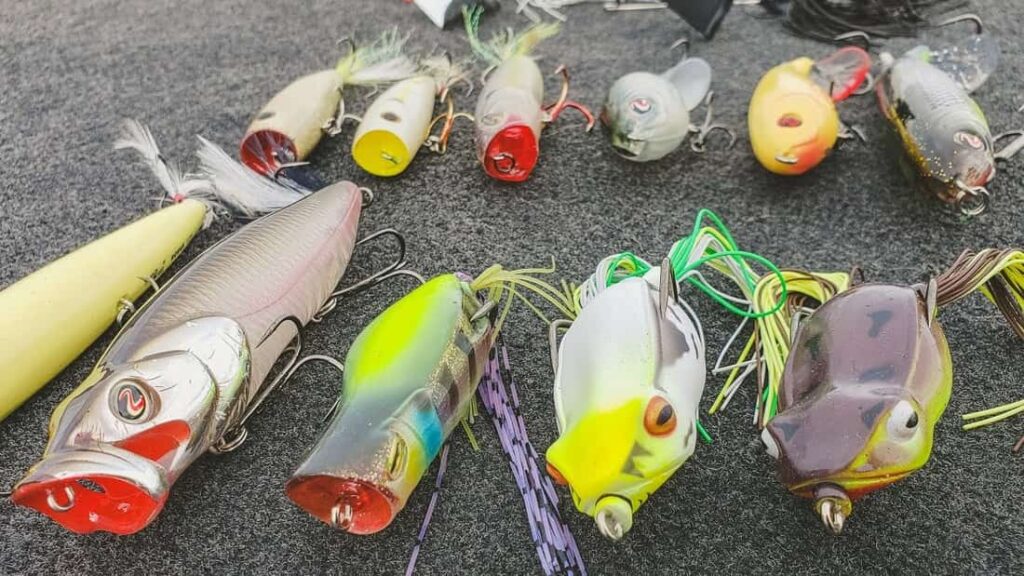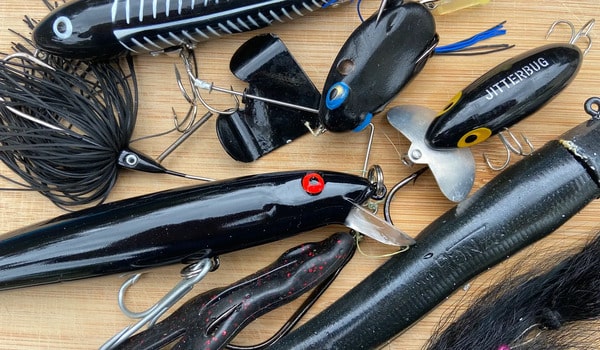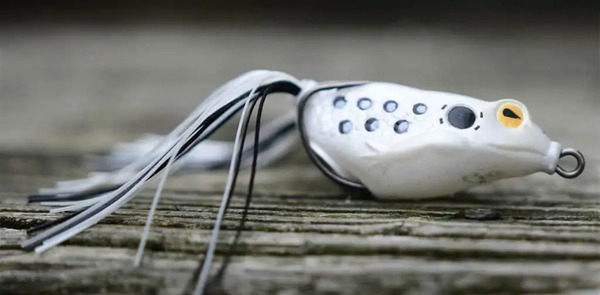The Only 3 Colors You Need for Topwater Lures
Lure colors can be very complicated and often very intimidation.
But it is best to keep them as simple as possible, especially with topwater lures.
Let’s talk about the only 3 lure colors you need for topwater lures, and when to use each.
Why You Need to Simplify
There are quite literally limitless colors options when it comes to bass fishing lures.
It is very easy to get pressured into buying tons of them or thinking that you need every color under the sun to successfully catch bass.
The truth is that 90% or more of your results can narrowed down to a very small number of colors.
And with topwater lures, it can be narrowed down to only 3.
Keeping your topwater lure colors very simple will save you tons of money and give you much more confidence and practice with each individual color.
The Only Important Topwater Lure Colors:
1. Black
Black is a staple color no matter what water column you are fishing.
A black buzzbait or black frog are some of the most iconic topwater lures in all of bass fishing.
There are two situations where black is the best color for topwater fishing. First is low light conditions.
Overcast or rainy days greatly reduce the light that enters the water while still creating a very bright, pale sky.
Lighter colored topwater lures will have a tendency to blend into the overcast sky, while black contrasts much better and stands out very well.
The morning and evening hours are very similar. During these hours, there is simply much less light to help bass see, and a clear black silhouette on the surface makes it much better for them to find and eat your lure.
The other situation is muddy water. For essentially the same reasons, bass have a harder time seeing clearly.
So having a more clear silhouetted lure profile with that dark black color makes it much easier for the bass to eat your lures.
Additionally, during low light or muddy conditions, you don’t have to worry as much about realistic colors because the bass can’t see very well any way.
So bass won’t care if you don’t match the exact color of their forage, they are more concerned about locating their target than the exact appearance of that target.
Also Read: When to Use Black and Blue Lures
2. White
Going to the complete opposite side of the spectrum, we have the color white.
White is probably the overall most used color when fishing topwaters.
Despite your initial thoughts, white is actually a very natural lure color, specifically for topwater lures.
Almost all baitfish and amphibian creatures have white bellies. From bluegill to shad to frogs and lizards, that white belly is quite universal.
So when bass look upward at your lure on the surface and see that white color, it looks very much like all the other forage they eat off of the surface.
For this reason, white topwater lures work very well in high light conditions as well as clear water.
The bass can clearly see the lure in the bright, sunny weather so they don’t need the extra silhouette of a dark profile.
And the same can be said for clear water. Instead, the bass are a bit more cautious and are more concerned about how realistic the bait looks.
And since white looks very real from below, it makes a very natural presentation.
White is also a tremendous topwater lure color anytime bass are heavily feeding on shad.
Offshore bass love to school up and push shad up to the surface, especially during the summer months.
And during the fall, bass are very dialed into shad in all water depths. If your body of water has shad as a major bass forage, white is always a great color for topwater lures.
3. Bluegill
This is your hyper realistic color option. In ponds or very shallow water, bass are primarily feeding on bluegill.
And dialing in your topwater colors a bit more with a realistic bluegill paint job can definitely catch you more bass.
There is one big thing to consider when thinking about why bluegill colors work so well in these conditions.
The water is very shallow. Whether it is a pond or you are working the banks of a big lake, the water may only be a 2-3 feet deep.
Because of that low depth, the bass will naturally be looking at your topwater lures with a more horizontal angle.
So rather than look mostly at the bottom of the lure, they bass are actually focusing in on the side profile of the lure.
This is where realism of your topwater lures becomes a bit more important.
And in that shallow water (regardless of whether it is a pond or lake) bluegill are going to be the number one forage for bass.
So using natural bluegill colors with your topwater lures can make a huge difference in getting those bass to bite.
Those shallow water bass are typically hanging around just outside of where the bluegill stack up, just waiting for one to stray out a little too far.
So give them that exact opportunity with a realistic bluegill vulnerable on the surface.
Reeling this In
Simplifying your topwater lure colors to just black, white, and bluegill can drastically improve your bass fishing success.
By focusing on these three essential colors, you can save money, increase your confidence, and enhance your practice with each lure.
Black lures are ideal for low light and muddy water, offering a clear silhouette that bass can easily detect.
White lures mimic the natural bellies of many prey species, making them perfect for bright conditions and clear water.
Bluegill-colored lures are your go-to for shallow waters where realism is key.
By mastering these three colors, you’ll be well-equipped to tackle a variety of fishing scenarios with greater ease and effectiveness.










